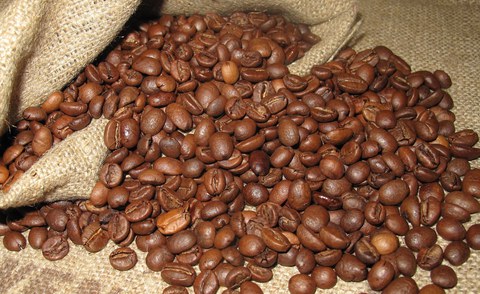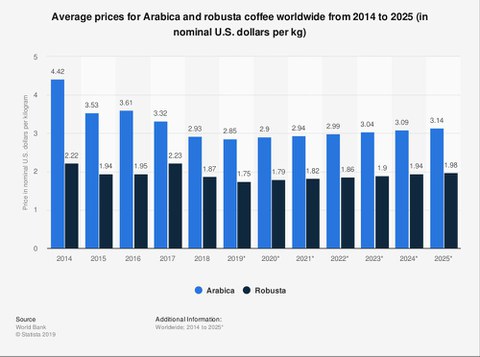Jul 19, 2019
Uncovering coffee adulterations: Food chemistry at TU Dresden wants to accelerate HPLC process
Coffee is the most consumed beverage in Germany and, after crude oil, the most important commodity worldwide. 25 million people worldwide are engaged in coffee cultivation, processing and trading. In 2017 alone, 1.1 million tonnes were imported into Germany, and the trend is rising. The two best-known types of coffee, Arabica and Robusta, have the greatest economic importance worldwide. Arabica coffee is cultivated in higher areas from 1000 metres above sea level, where the cherry grows and ripens only slowly due to the low temperature. This has an effect on the pleasant mild taste of the coffee drink. On the other hand, the Robusta plant can also thrive in flatter regions with higher and fluctuating temperatures. It tends to be more resistant not only to climate but also to various diseases and pests. The drink has an earthy, dull note. This is also reflected in the price: on the world market, the price per kilo of the more sensitive Arabica bean can almost double.
To ensure food safety, quality and ultimately consumer protection, food fraudsters have been prosecuted and convicted in globally coordinated Opson operations since 2011. Various organisations such as Customs, Europol and Interpol cooperate with the life monitoring authorities of the individual countries. In 2019, three cases were uncovered in the course of "Operation OPSON VIII" in Germany in which more expensive Arabica coffee was mixed with cheaper Robusta beans without this being declared. The coffee contained an ingredient found exclusively in Robusta coffee: 16-O-methylcafestol.
Professor Dr. Karl Speer (Professor of Special Food Chemistry and Food Production) discovered a new diterpene in coffee during his habilitation in the 1980s and was able to identify it as 16-O-methylcafestol (16-OMC). To date, 16-OMC has only been detected in Robusta beans. The diterpene remains largely stable even under drastic coffee roasting temperature conditions, so that it is used as a marker both for raw and roasted coffees and for coffee products. In Germany, the HPLC method for determining the content of 16-O-methylcafestol in roasted coffee was published by the German Institute for Standardization in DIN 10779 1999 and confirmed in 2004. In addition, a not yet certified NMR method has recently been used primarily for screening the 16-OMC: "This provides faster results, but requires the use of a very expensive analytical device," says Professor Speer.
At its constituent meeting of the DIN working committee "Authenticity" in February 2019, it was decided that the European working group "Food Authenticity", which met for the first time in Berlin in June, should be recommended to develop a standardised European standard for the determination of 16-O-methylcafestol in raw and roasted coffees using NMR and HPLC. After acceptance of the proposal, Prof. Karl Speer was appointed convener of the working group "Coffee and coffee products". "In addition to incorporating the NMR method into a standardization process, another goal is to optimize the existing DIN HPLC method 10799 in such a way that it also delivers results within one day," explains Professor Speer. In order to test the suitability of a developed method, so-called interlaboratory comparisons are carried out. Different laboratories receive the same samples, which then have to be examined using the specified method. The results of the participating laboratories can then be used to determine whether the method provides comparable values and which statistical deviations have to be expected. These data are then part of the developed CEN methods.
With a small research group at the TU Dresden, Professor Speer is not only engaged in coffee analysis, but also in the investigation of various native medicinal plants and the development of analytical methods for the detection of contaminants and pesticides in food. Since his doctorate, however, methods for the authenticity of honey varieties have also been developed. For example, his team was recently able to clearly identify falsifications of the very expensive New Zealand manuka honey using the analytical methods developed in the working group.
The consumer cannot determine whether 100 percent Arabica is contained in a declared package: "Only from about 15 to 20 percent can very experienced coffee drinkers taste a difference. The chemical test, however, is already able to reliably detect Robusta contents of 1-2% and thus reliably detect counterfeits," says Professor Speer. However, it is important for him to emphasize that the question of Arabica or Robusta is primarily a quality feature according to the motto: If 100% Arabica is advertised and paid for, then 100% Arabica should also be included.
By applying validated internationally recognized CEN methods by all institutions concerned with the authenticity of coffee (coffee roasters, trade, food inspection), a uniform assessment is achieved and the consumer is better protected against misleading and deception. "Using the HPLC method, we can also detect the 16 OMC content in instant coffee. How exactly this is done, however, remains our secret for the time being," Professor Speer announces with a mischievous smile.
Contact for journalists:
Prof. Dr. Karl Speer Professur für Spezielle Lebensmittelchemie und Lebensmittelproduktion Phone: + 49 351 463 33132 Email:


